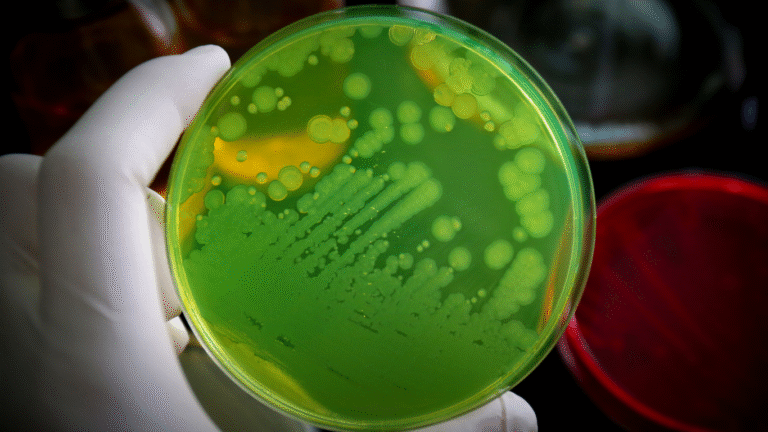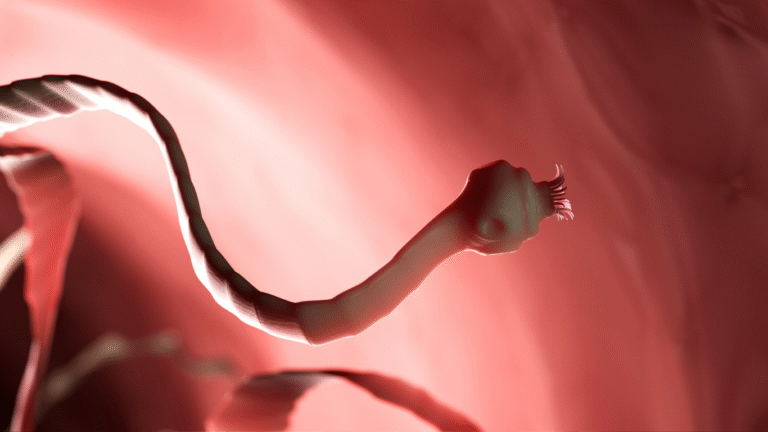Early warning signs of flesh-eating bacteria you should never ignore can save your life. Learn symptoms, risks, and prevention in this must-read guide.
Picture this: You scrape your leg while skateboarding. No big deal, right? You slap on a bandage, keep scrolling TikTok, and think it’ll heal in a few days. But 12 hours later, the pain feels like you broke your leg, the skin’s swelling, and you’re running a fever. This isn’t just a “bad bruise” moment—this could be the start of something far worse.
The early warning signs of flesh-eating bacteria you should never ignore include extreme pain, rapid swelling, skin discoloration, and sudden fever—seek help immediately.
What Flesh-Eating Bacteria Actually Is
Before you start imagining movie-style monsters, here’s the reality. Flesh-eating bacteria is the nickname for necrotizing fasciitis, a rare but deadly infection that attacks the tissue beneath your skin.
The main culprit is often Group A Streptococcus, the same bacteria that causes strep throat—but in this case, it enters through even the tiniest cut, scratch, or insect bite. Once inside, it spreads like wildfire, releasing toxins that kill tissue and overwhelm your immune system.
Unlike common skin infections (which may take days to get worse), necrotizing fasciitis can go from mild redness to life-threatening damage in under 24 hours. That’s why spotting it early is everything.
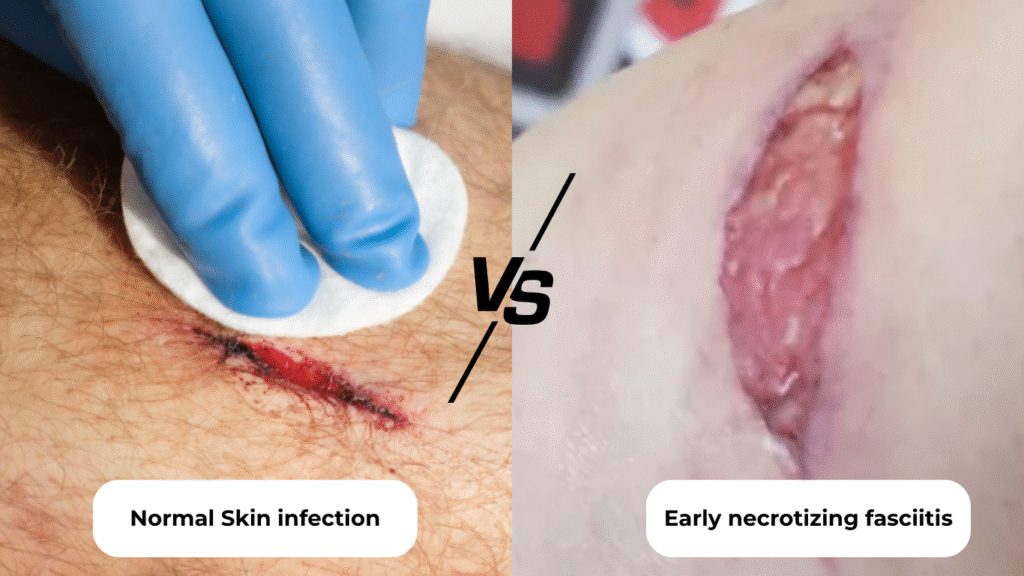
What’s the smallest injury you’ve ever had that turned into something bigger than expected?
The First Clues: Pain That Feels “Wrong”
One of the first early warning signs of flesh-eating bacteria you should never ignore is pain that’s way more intense than the wound looks.
Doctors call this pain out of proportion, and it happens because the infection is attacking tissue under the skin—long before you see much on the surface. You might have a scratch the size of a paperclip, but it feels like your whole arm is on fire.
Other early symptoms often include:
- Redness and swelling spreading quickly
- Skin that’s warm and tender to the touch
- A sudden spike in fatigue
By comparison, with a regular skin infection like cellulitis, pain usually grows gradually and matches the size of the infection area.
Visual suggestion: Diagram showing the difference in pain levels between a common infection and necrotizing fasciitis over time.
Alt text: “Pain progression in common skin infection vs. early flesh-eating bacteria infection.”
If your pain feels suspiciously over-the-top, would you know where to go for immediate care?
The Fast-Changing Skin Signs
If pain is the first red flag, skin changes are the flashing neon sign that you need urgent help.
In the early hours, you might see:
- Redness that spreads quickly
- Skin turning purple or gray within a short time
- Blisters or bumps forming near the wound
- A shiny, stretched look to the skin from swelling
As the bacteria spread, the skin can darken or even develop a foul odor due to dying tissue. That’s why “waiting to see if it gets better” can be dangerous.
For comparison, common skin infections tend to stay red, warm, and swollen without rapid color changes or blistering in the first day.
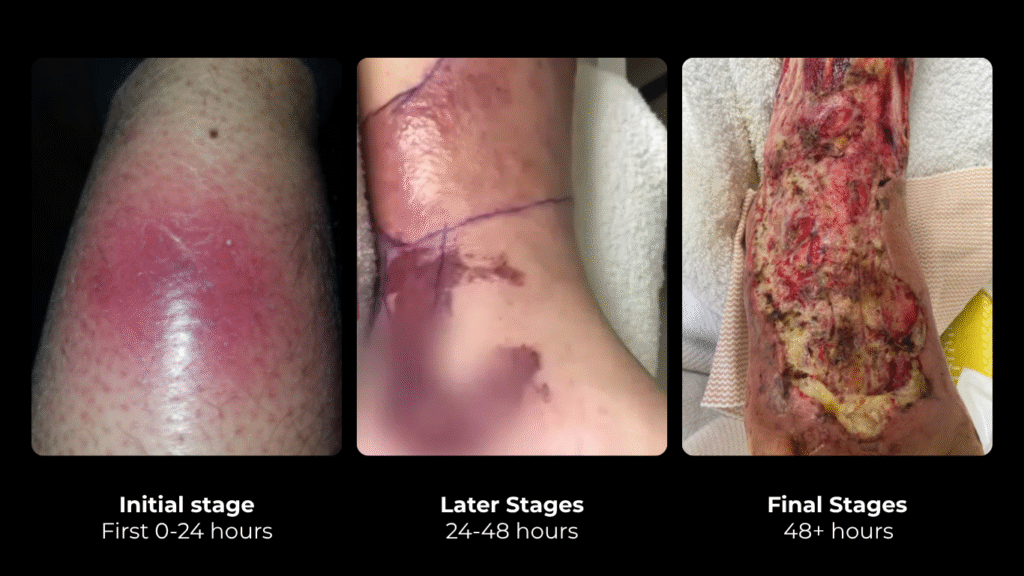
What’s the fastest you’ve ever seen a bruise or wound change color?
Whole-Body Symptoms That Should Scare You
While the skin is where you see the damage, flesh-eating bacteria affect your whole body almost instantly. That’s because your immune system is going into overdrive to fight off the toxins.
Early whole-body warning signs include:
- Sudden fever or chills
- Unusual tiredness or weakness
- Nausea or vomiting
- Low blood pressure (feeling dizzy or faint)
By contrast, most skin infections won’t cause severe flu-like symptoms in the first day unless the infection has spread to the bloodstream—something that usually takes longer to develop.
When was the last time you listened to your body and caught something early?
Why Speed Is Everything
Here’s the hard truth: Once necrotizing fasciitis starts, the clock is ticking. According to the CDC, the sooner you get treatment, the better your chances of avoiding amputation or worse.
Typical treatment involves:
- Immediate IV antibiotics
- Emergency surgery to remove infected tissue
- Supportive hospital care like fluids and oxygen
In contrast, a standard skin infection might be handled with an oral antibiotic prescription and rest at home.
The difference in urgency is why knowing these early signs could literally save your life.
Visual suggestion: Side-by-side photo of hospital antibiotics and surgical tools with “Time = Survival” caption.
Alt text: “Early medical treatment for flesh-eating bacteria can save lives.”
If you had to decide in 10 minutes whether to go to the ER, would you trust yourself to make the call?
How to Lower Your Risk
You can’t completely avoid the bacteria—it’s often in environments we can’t control—but you can lower your odds of infection.
- Clean all cuts, scrapes, or bites right away with soap and water
- Keep wounds covered until fully healed
- Avoid swimming in lakes, rivers, or the ocean with open wounds
- Seek quick treatment for skin infections
For everyday scrapes and scratches, this might feel like overkill. But when the risk is something as extreme as flesh-eating bacteria, over-preparing is just smart.
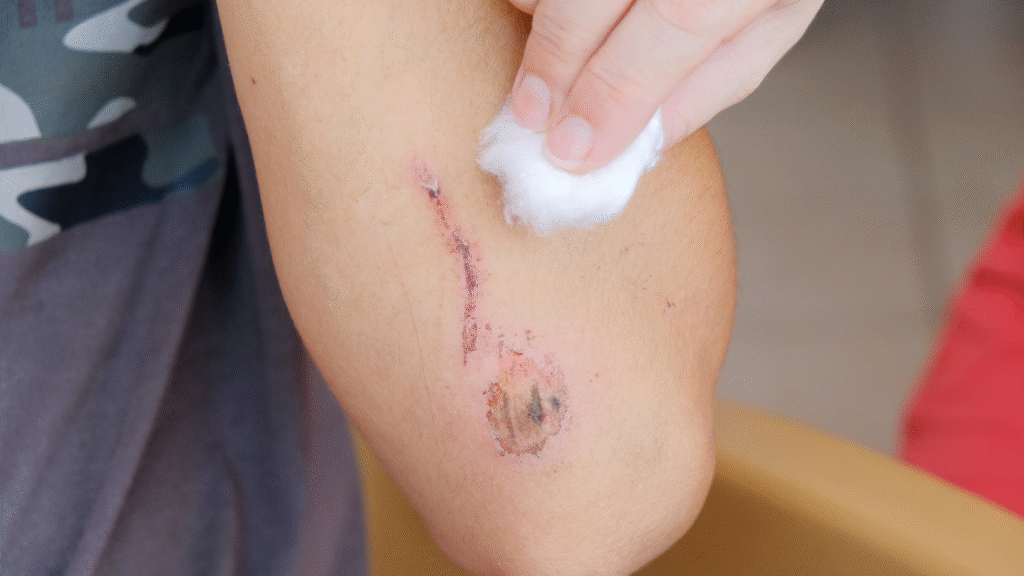
Visual suggestion: Photo of a person cleaning a small cut with antiseptic.
Alt text: “Cleaning wounds is a simple step to prevent flesh-eating bacteria infection.”
What’s one small health habit you could commit to today that would make a big difference?
Quick Facts to Remember
- Flesh-eating bacteria can destroy tissue in under 24 hours.
- Early symptoms include extreme pain, swelling, and rapid skin changes.
- Even small injuries can be entry points for infection.
Recap: What You Should Never Ignore
- Extreme pain from a minor wound
- Rapid swelling and skin discoloration
- Fever or chills soon after injury
- Blisters or foul odor from the wound
Why It Matters to You
You don’t need to be living in a medical drama for this to affect you—anyone, anywhere, can get necrotizing fasciitis. The difference between a scare and a tragedy often comes down to recognizing those early warning signs and acting fast.
Your future self will thank you for learning this now.
Read more about how to tell flesh-eating bacteria from common skin infections for extra peace of mind. For deeper science, the CDC’s necrotizing fasciitis resource is a must-bookmark.
Sources:
- Centers for Disease Control and Prevention (CDC) – Necrotizing Fasciitis Overview: https://www.cdc.gov/groupastrep/diseases-public/necrotizing-fasciitis.html
- World Health Organization (WHO) – Antimicrobial Resistance and Necrotizing Fasciitis: https://www.who.int/news-room/fact-sheets/detail/antimicrobial-resistance
- National Institutes of Health (NIH) – Necrotizing Soft Tissue Infections Review: https://www.ncbi.nlm.nih.gov/pmc/articles/PMC5653360/



